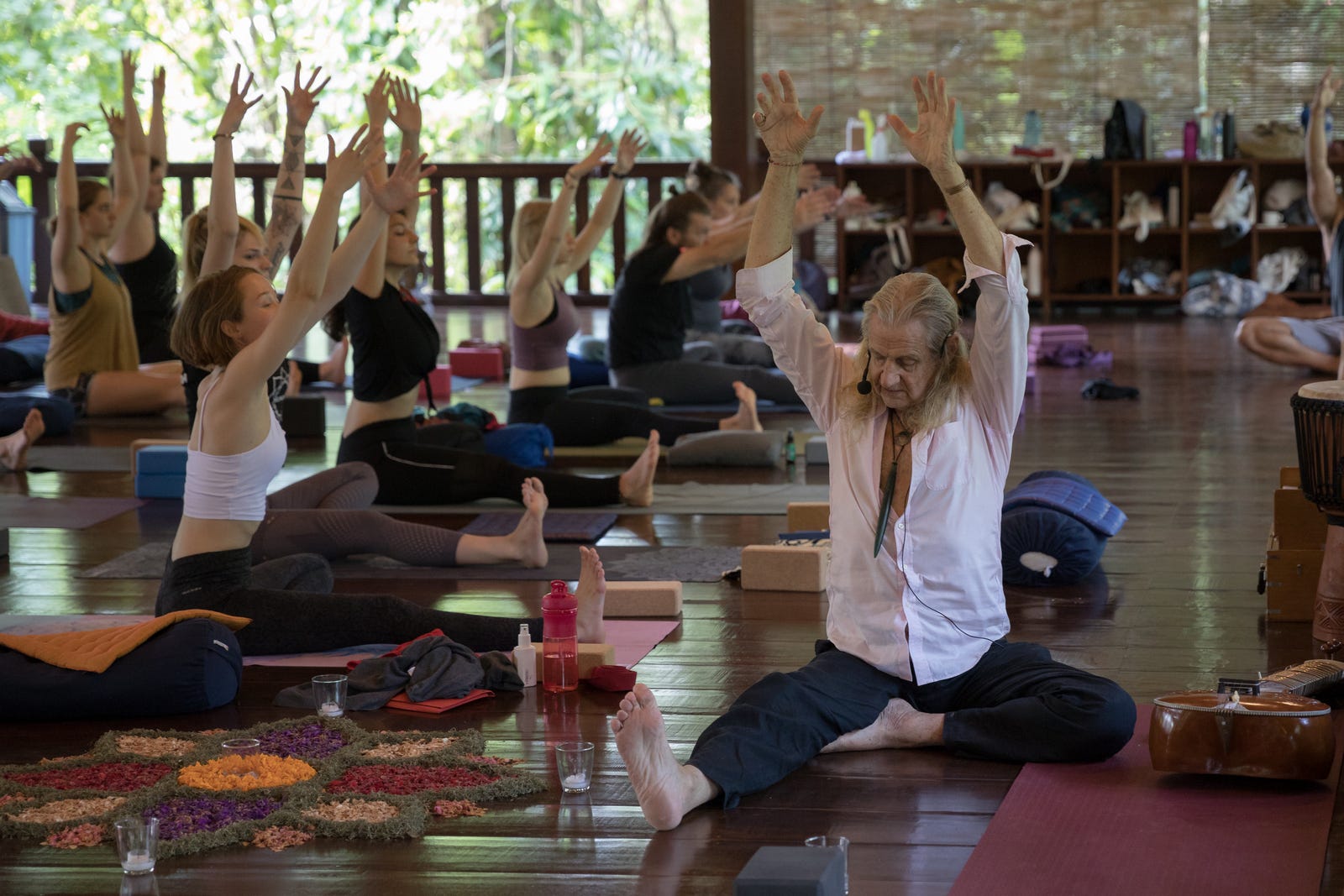Start Where You Are | Mark Whitwell
When you know your whole body you realize the heart. The whole body is the heart, where all opposites are in union.
I want you to do your yoga in your daily routine, non- obsessively, actually and naturally as the mere participation and sheer participation in the extreme condition of life that is utterly upon you, in you, as you. Because you won’t get it any other way. My teacher Sri T. Krishnamacharya, the teacher of our teachers, said,“Do your yoga.”That’s what he said all the time.“Do your yoga. Do your practice.”And I’m saying that to you. Do your yoga. Do your practice.
Yoga is the complete surrender of opposites, male and female, one to the other, within and without. There is a special polarity where this is felt, associated with inhalation and exhalation.The exhale is masculine strength from the base, moving energy up the spine; the inhale is feminine receiving from the crown and down the front. This is what I call strength receiving.
If you do asana it is hatha and hatha yoga is tantra. It is the embrace of all things natural. It’s intimacy with life. Tantra is of the non-dual philosophic understanding. That is, all experience can not be separated from Source.Yoga is therefore the direct absorption of nurturing Source and all appearance and expression of Source.
Daily practice is a pleasure. There can be some work in it, but never a struggle. It never departs from the pleasure of strength receiving. When you practice yoga in the way that is right for you–your body type, your age and health–then the tantra is given. It is very fruitful even if you do not feel that at first. It is cumulative like money in the bank.The healing force seeps through gradually, because it is direct participation with the Life.
Make your yoga practice personal to you. Yoga- realization is the realization of you as Life itself, in the midst of the cosmos and in utter intimacy with the cosmos. It all happens in your body so do yoga that’s right for your body. Don’t merely align yourself to somebody else’s standard practice.
Do it without struggle. Don’t make a muscular attempt to get to a predefined place. Accept yourself as you are and work with the natural elasticity and strength of your body as it is.The point is to keep your breath strong and even throughout the asana practice. If you’re not breathing, don’t do the pose.You must be able to inhale gracefully in strong asana.This is how Life comes and how God comes.
Do at least 20 minutes of yoga a day. Morning is a good time to practice because it sets up the conditions of yoga in the mind for the day. It’s a compassionate gift to your self!
Plan your yoga sequencing, or vinyasa. Spend half your time doing asana, and divide up the remaining time between pranayama and seated rest.Add in time to rest a few moments between asana and pranayama. So, for a 20 minute practice, do 10 minutes of asana; rest lying down for two minutes; do four minutes of pranayama and rest sitting for four minutes. Those are the only elements you need to set something in motion. Don‘t skip any of it.
Sitting and resting is not meditation or “trying” to meditate.This is a time of no responsibility, nothing, not even meditation.You’re not trying to realize anything or look for anything. You are merely participating in Source condition that already exists.
As your practice strengthens you can add bandhas. You begin by pausing after inhale and pausing after exhale during your asana practice. Bandhas, the gentle contraction of muscle groups, are placed in the breath retention to move the energy in your body. Just like asana, or postures, bandhas serve the breath.
Yoga happens when you connect to yourself. Yoga is you, participating in your life. Yoga is your connection to yourself as you, right now, as the extreme beauty and intelligence of life. Yoga means union. And it is in your union with your day-to-day life that the heart is known.


Comments
Post a Comment